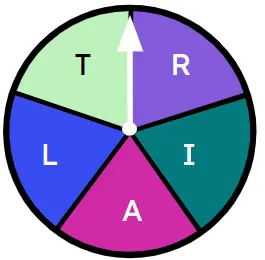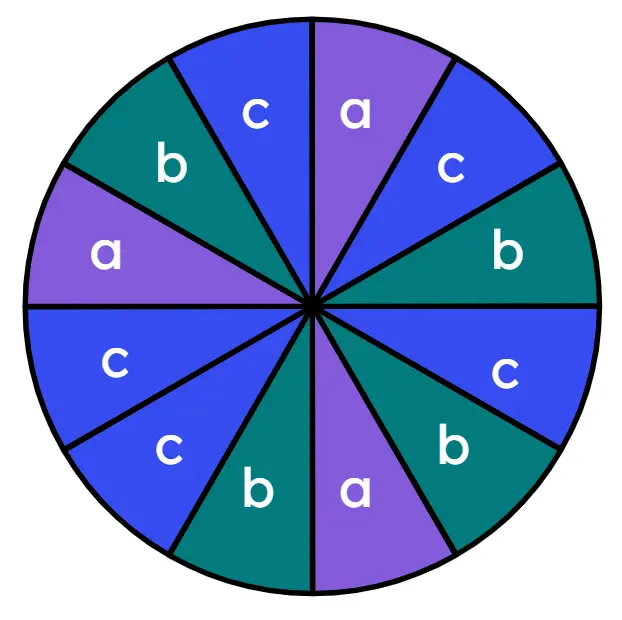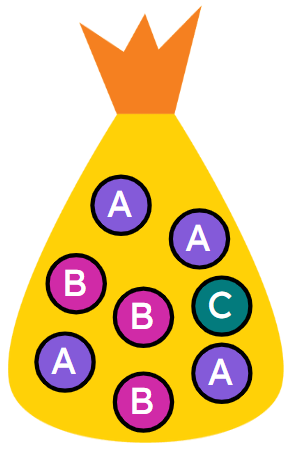Myths about teaching can hold you back
- Year 9
Checking listing possible outcomes
I can systematically list all the possible outcomes for one or more events.
- Year 9
Checking listing possible outcomes
I can systematically list all the possible outcomes for one or more events.
These resources will be removed by end of Summer Term 2025.
Switch to our new teaching resources now - designed by teachers and leading subject experts, and tested in classrooms.
These resources were created for remote use during the pandemic and are not designed for classroom teaching.
Lesson details
Key learning points
- The possible outcomes for one event can be stated.
- The possible outcomes for two events can be stated.
- The possible outcomes for three events can be stated.
Keywords
Trial - A trial is a single predefined test.
Outcome - An outcome is a result of a trial.
Systematic - When listing outcomes systematically, they are listed in such a way as to ensure all outcomes are recorded.
Common misconception
Pupils may list the possible outcomes in an unsystematic way, potentially causing them to miss or repeat outcomes.
Demonstrate how our system of counting is a systematic method for listing numbers and compare it to some of the listing strategies used in the lesson.
To help you plan your year 9 maths lesson on: Checking listing possible outcomes, download all teaching resources for free and adapt to suit your pupils' needs...
To help you plan your year 9 maths lesson on: Checking listing possible outcomes, download all teaching resources for free and adapt to suit your pupils' needs.
The starter quiz will activate and check your pupils' prior knowledge, with versions available both with and without answers in PDF format.
We use learning cycles to break down learning into key concepts or ideas linked to the learning outcome. Each learning cycle features explanations with checks for understanding and practice tasks with feedback. All of this is found in our slide decks, ready for you to download and edit. The practice tasks are also available as printable worksheets and some lessons have additional materials with extra material you might need for teaching the lesson.
The assessment exit quiz will test your pupils' understanding of the key learning points.
Our video is a tool for planning, showing how other teachers might teach the lesson, offering helpful tips, modelled explanations and inspiration for your own delivery in the classroom. Plus, you can set it as homework or revision for pupils and keep their learning on track by sharing an online pupil version of this lesson.
Explore more key stage 3 maths lessons from the Probability: theoretical probabilities unit, dive into the full secondary maths curriculum, or learn more about lesson planning.

Licence
Prior knowledge starter quiz
6 Questions
Q1.In probability, what is a 'trial'?
Q2.A is all the possible outcomes of a trial.
Q3.Which of these numbers is not on a standard six-sided dice?
Q4.Match each trial with its sample space.
A spinner containing "win" and "lose" is spun.
A regular six-sided dice is rolled.
A coin is flipped once.
A bag contains tiles each of which is a vowel. A tile is picked.
Q5.Complete the following sample space for the outcomes of the spinner. ξ = {A, I, L, T, }.

Q6.How many possible outcomes are there on this spinner?

Assessment exit quiz
6 Questions
Q1.When listing outcomes , they are listed in such a way as to ensure all outcomes are recorded.
Q2.A coin is flipped twice. Complete the sample space ξ = {HH, HT, TH, }
Q3.A coin is flipped three times. Which outcome is missing from the following sample space? ξ = {HHH, HHT, HTH, HTT, THH, THT, , TTT}
Q4.A counter is taken from the bag. Its letter is noted and then it is placed back into the bag. A counter is taken from the bag again. Which is a correct sample space for this trial?



